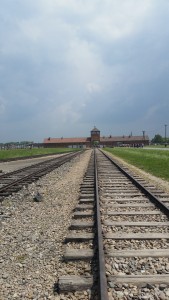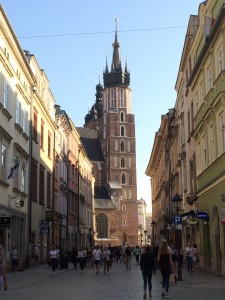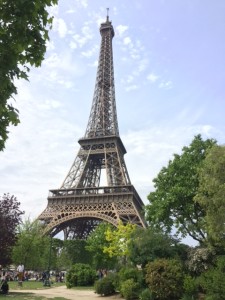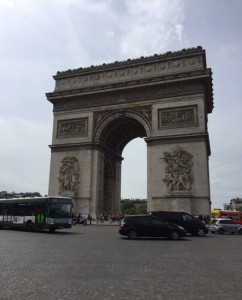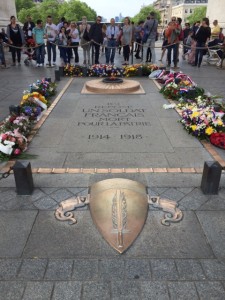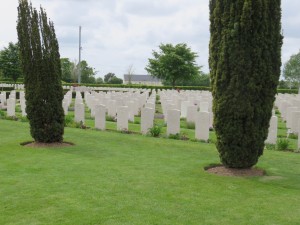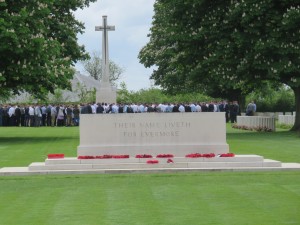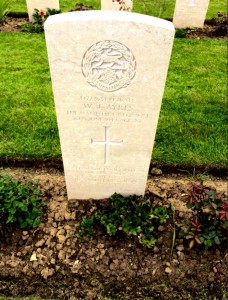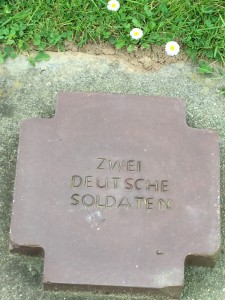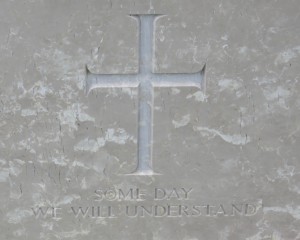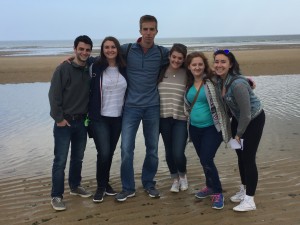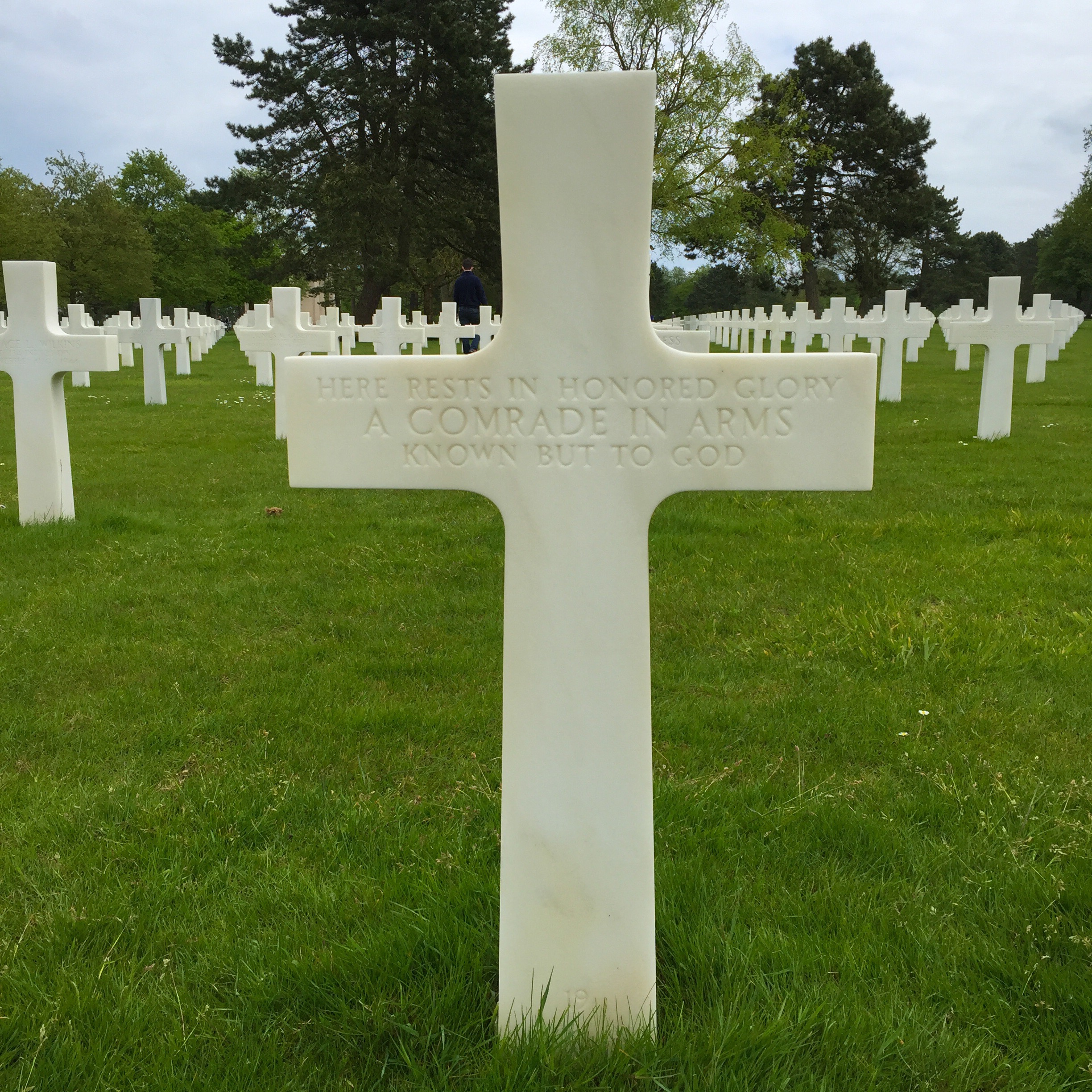As I stepped onto the bus to Auschwitz-Birkenau I attempted to mentally prepare myself for what I knew would be one of, if not the most, difficult day of the program. However, no amount of meditation could have possibly prepared me for what would happen once I stepped through the gates of a place where so many had lost their lives to the cruelty of the Nazis.
Immediately I was startled by the amount of tour busses in the parking lot. For a moment I forgot I was also there for a tour. The entrance was located next to various snack bars and a place to buy books and small souvenirs. I was shocked by the amount of people standing near the entrance. I could barely walk there were so many people. The amount of school children running around and playing near the entrance confused me. Were they too young to comprehend what had happened just meters away? Was it a cultural difference? Why did their teachers not even flinch at their behavior? I never found an answer that sat well.
I had seen countless photographs documenting the camp, especially of the entrance gate to Auschwitz I which reads, “Arbeit macht Frei.” In English this means “Work will make you free.” Something I hadn’t considered was the fact I had never seen a color picture of the site. The black and white pictures I had seen in school had given me a much more antiquated picture of the camp in my head. Around the gate I could see green grass and sunlight shining through the leaves of the trees. The buildings in Auschwitz I were much more fortified than I had pictured. At one point it crossed my mind that it was almost pretty, which made me feel absolutely sick to my stomach. I lifted my camera to capture the image of the gate, but after I took the picture I felt guilty and incredibly disrespectful. For the rest of the visit I kept my camera in my bag partially due to the guilt I was experiencing, but mostly because I felt I needed to see through my eyes rather than the lens of a camera. The group began to cross through the gate and I felt my stomach begin to tighten up. As I heard the gravel shift under my feet it was difficult to get the image of the 1.1 million lost lives out of my head.
Our visit to Auschwitz-Birkenau was guided. Our guide was very informative, but it was clear he had a script he was required to follow. Polish nationalism was evident in his presentation. He talked about Nazi terror, but did not mention other parties involved in running the camp. He also made a point to stress that Jews were not the only victims. In addition, the script was filled with emotionally charged words and phrases. For example, the word “murder” was used often and a few times the guide asked us to imagine walking down the path knowing we would never see our families again. The museum clearly wants its visitors to view the camps as a site of Nazi terror against the people of the world rather than as the site of the Holocaust most people tend to think of it as.
Similar to my experiences at Omaha and Utah Beach, it was difficult to picture Auschwitz I as it was while it was open. I felt somber, but when we walked into the main exhibit of Block 4 I lost my composure entirely. Before we walked in our tour guide informed us the room was one of two where picture taking was not permitted, and that we would know why when we stepped inside. I was the fourth person from our group to step inside the room. A glass panel stretched over the entire wall. After a few moments of staring I realized I was looking at a mountain of human hair. Our tour guide informed us that when the camp was liberated by the Soviets, they found seven tons of hair. Only two of those tons are on display for visitors. During the years the camp was open the hair was used to make fabric that was then used to make uniforms or to line boots to make them warmer. The tour guide emphasized the fact that the Nazis had essentially harvested what they needed before sending these people off to their death. The rooms that followed displayed massive piles of glasses, shoes and kitchenware. However, it was the hair that affected me the most. The other piles were devastating to look at, but the hair is part of the body. Over 7 tons of hair had been taken from people. A business was made off of the hair of people who were killed. I couldn’t look away. I couldn’t stop the tears. I wanted nothing more than to throw up.
We continued the tour in Auschwitz II. We walked along the unloading platform and walked the path that so many took to their death after failing the selection process. The huts seemed to stretch on as far as I could see. The guide shared that there had been plans to build two more sections of barracks, but the war had ended before they could be constructed. We walked into a barrack used as a temporary holding area for women. Each “bed” had three levels and each level had to hold 8-10 people. The building was made out of brick, and there was no real air ventilation. There were about twenty of us in the building, and I was still warm. I can’t imagine what it must have felt like for the victims of the camp.
The bus ride home from the camp was very quiet. The Holocaust has always been a subject of interest for me, so I was anxious to see how being in the camp would change my perspective. Even though I was in the camp, I still can’t quite fathom how humanity was capable of carrying out such destruction. I can’t wrap my head around the amount of life that was lost. After standing on the railroad tracks where so many said goodbye to their loved ones for the last time I realize that the horrors of the Holocaust were larger than I could have ever imagined. Walking through the camp is a very personal experience, and it left me speechless. I’m thankful to have had the opportunity to pay my respects in such a solemn place.





